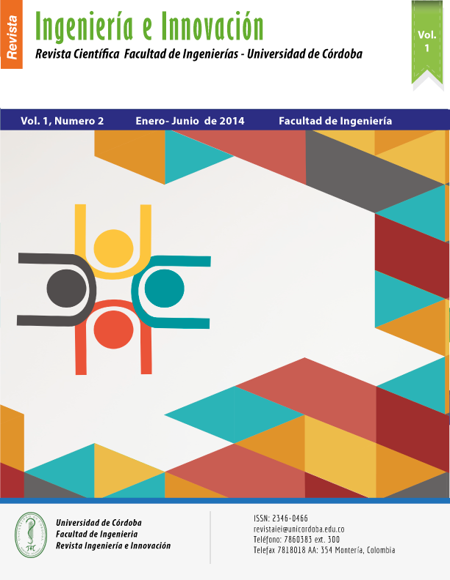Personalización en LMS a partir de un Modelo Integral de Estudiante: un Caso de Implementación Tecnológica
Personalización en LMS a partir de un Modelo Integral de Estudiante: un Caso de Implementación Tecnológica
Show authors biography
Este artículo parte del reconocimiento de tres ejes fundamentales: (1) la personalización (adaptación) es una función deseada por los sistemas de aprendizaje para los procesos centrados en el estudiante (usuario) y para ello requieren que el denominado Modelo de Estudiante (ME) integre sus características fundamentales; (2) la conformación de un Modelo Integral de Estudiante (MIE) que define y categoriza de manera holística los elementos fundamentales para promover la personalización; (3) los Sistemas de Gestión de Aprendizaje (LMS por sus siglas en inglés) son plataformas de uso masivo que usualmente no vinculan la función de personalización. Por lo anterior, el proceso investigativo seguido muestra un estudio de caso en el que a partir del MIE conformado se emplea la categoría de Estilos de Aprendizaje (EA) para generar la provisión personalizada de material instruccional a cada estudiante de los cursos adscritos a un LMS. Los resultados destacan el aporte conceptual a partir del MIE, la viabilidad del proceso de personalización en el LMS, la relevancia de las redes bayesianas para la personalización y la eficiencia de la arquitectura tecnológica implementada por medio de servicios web.
Article visits 615 | PDF visits
Downloads
- J. Moreno, D. A. Ovalle, and R. M. Vicari, “Hacia una taxonomía en la educación asistida por computador,” Revista Educación en Ingeniería, vol. 5, no. 9, pp. 27-36, 2012/02/15/, 2010.
- L. Aroyo et al., “Interoperability in Personalized Adaptive Learning,” Educational Technology & Society, vol. 9, no. 2, pp. 15, 2006.
- P. Brusilovsky, “Adaptive Hypermedia,” User Modeling and User-Adapted Interaction, vol. 11, no. 1-2, pp. 87-110, 2001/03//, 2001.
- V. García, “Personalisation in Adaptive E-Learning Systems. A Service Oriented Solution Approach for Multi-Purpose User Modelling Systems,” Computer Science, Institute for Information Systems and Computer Media (IICM). Graz University of Technology, Graz, 2007.
- M. Specht, and D. Burgos, “Implementing Adaptive Educational Methods with IMS Learning Design,” Adaptive Hypermedia 2006, 2006.
- F. J. Díez, “Introducción al Razonamiento Aproximado,” UNED, ed., UNED, 2005.
- M. A. Mendoza M., Categorización de Elementos para Conformar Modelos de Estudiante en Sistemas Adaptativos de Aprendizaje, vol. 1, Universidad del Cauca, Popayán, Colombia, 2012.
- M. A. Mendoza M., and C. González Serrano, “Modelos de Usuario y Sistemas Adaptativos de Aprendizaje,” in Congreso Internacional de Investigación en Ingeniería de Sistemas 2014, Tunja, Colombia, 2014, pp. 206-213.
- M. Mendoza Moreno, C. González Serrano, and F. Pino, “Focus Group como Proceso en Ingeniería de Software: Una Experiencia desde la Práctica,” Dyna, vol. 80, no. 181, pp. 51-60, Octubre de 2013, 2013.
- E. Popescu, “Adaptation provisioning with respect to learning styles in a Web-based educational system: an experimental study: Learning style adaptation,” Journal of Computer Assisted Learning, vol. 26, no. 4, pp. 243-257, 2010/07/16/, 2010.
- L. Howles, “Learning styles: What the research says and how to apply it to designing e-Learning,” http://isg.urv.es/library/papers/learning%20styles_overview.pdf, 2006].
- P. Paredes, “Una Propuesta de Incorporación de los Estilos de Aprendizaje a los Modelos de Usuario en Sistemas de Enseñanza Adaptativos,” Escuela Politécnica Superior, Universidad Politécnica de Madrid, Madrid, 2008.
- M. Chi et al., “Inducing effective pedagogical strategies using learning context features.” p. 12.
- E. Brown, T. Fisher, and T. Brailsford, “Real users, real results: examining the limitations of learning styles within AEH.” pp. 57-66.
- L. A. M. Zaina, F. R. Jose, Jr., and G. Bressan, “An approach to design the student interaction based on the recommendation of e-learning objects.” pp. 223-228.
- C. Wolf, “Construction of an Adaptive E-learning Environment to Address Learning Styles and an Investigation of the Effect of Media Choice,” School of Education. Design and Social Context Portfolio, RMIT University, Melbourne, 2007.
- D. E. Hunt, “Learning Styles and student needs: An introduction to conceptual level,” Students Learning Styles: Diagnosing and Prescribing Programs, pp. 27-38, 1979.
- C. W. Allinson, and J. Hayes. “The Cognitive Style Index, Technical Manual and User Guide,” 17/10/2013, 2013; http://www.talentlens.co.uk/assets/legacy-documents/71874/csi-manual.pdf.
- S. W. Riechmann, and A. F. Grasha, “A Rational Approach to Developing and Assessing the Construct Validity of a Student Learning Style Scales Instrument,” The Journal of Psychology, vol. 87, no. 2, pp. 213-223, 1974/07/01, 1974.
- J. B. Biggs, “Study Process Questionnaire Manual. Student Approaches to Learning and Studying,” 1987/01//, 1987.
- N. Entwistle, “The approaches and study skills inventory for students (ASSIST),” Edinburgh: Centre for Research on Learning and Instruction, University of Edinburgh, 1997.
- R. M. Felder, and L. K. Silverman, “Learning and Teaching Styles in Engineering Education,” Engineering Education, vol. 78, no. 7, pp. 674-81, 1988.
- N. Fleming, and C. Mills, “VARK,” A Guide to Learning Styles.[On-line: http://www.vark-learn.com/english/page.asp ], 1992.
- N. D. Fleming, and C. Mills, “Not another inventory, rather a catalyst for reflection,” 1992.
- P. Honey, and A. Mumford, The Manual of Learning Styles: Peter Honey Publications, 1992.
- P. Honey, and A. Mumford, “Learning Styles Questionnaire.”
- IEEE. “IEEE LTSC | WG12 | Final LOM Draft Standard,” 2014/02/25/16:51:52; http://ltsc.ieee.org/wg12/20020612-Final-LOM-Draft.html.
- ISO. “ISO/IEC/IEEE 29119-2:2013 - Software and systems engineering -- Software testing -- Part 2: Test processes,” 2013/11/21/18:11:03; http://www.iso.org/iso/catalogue_detail.htm?csnumber=56736.




